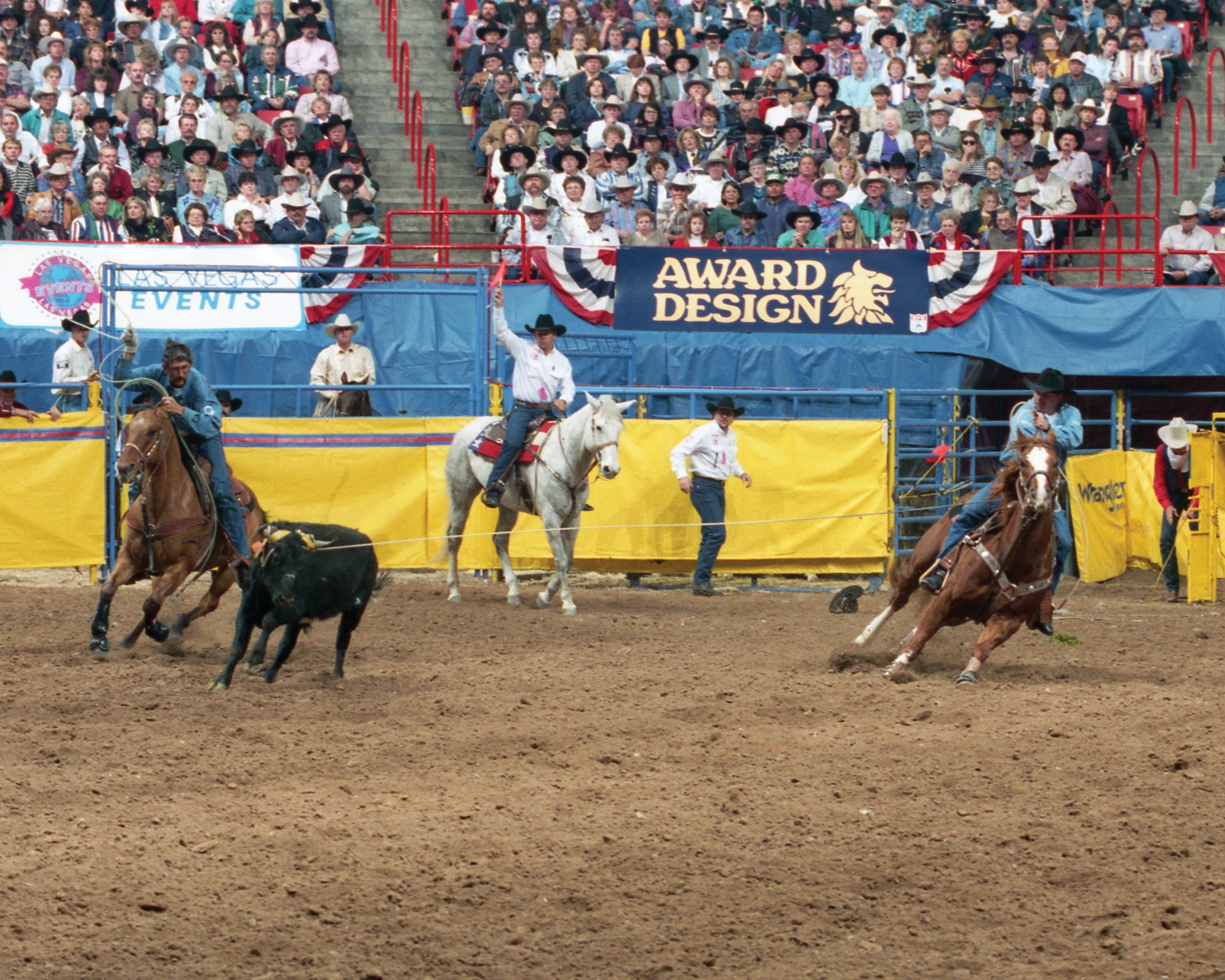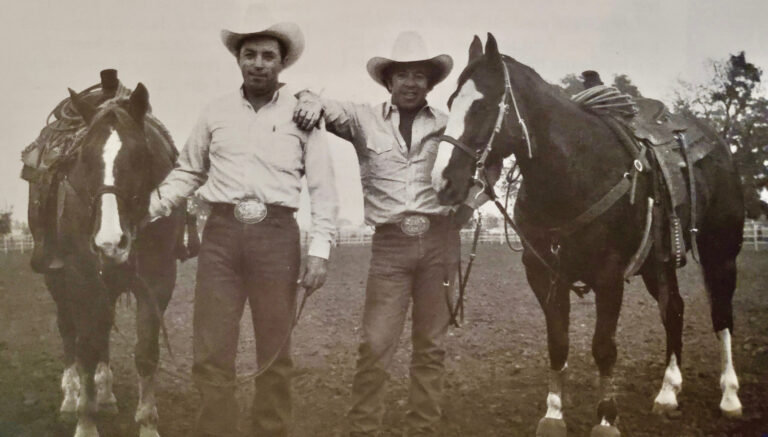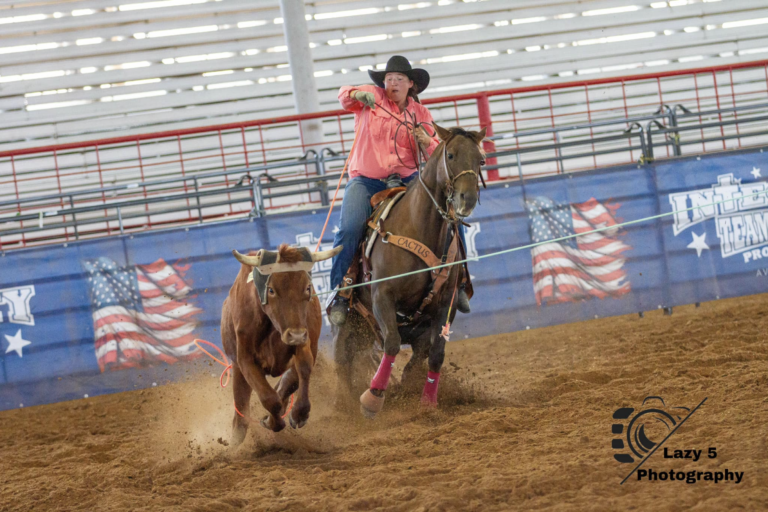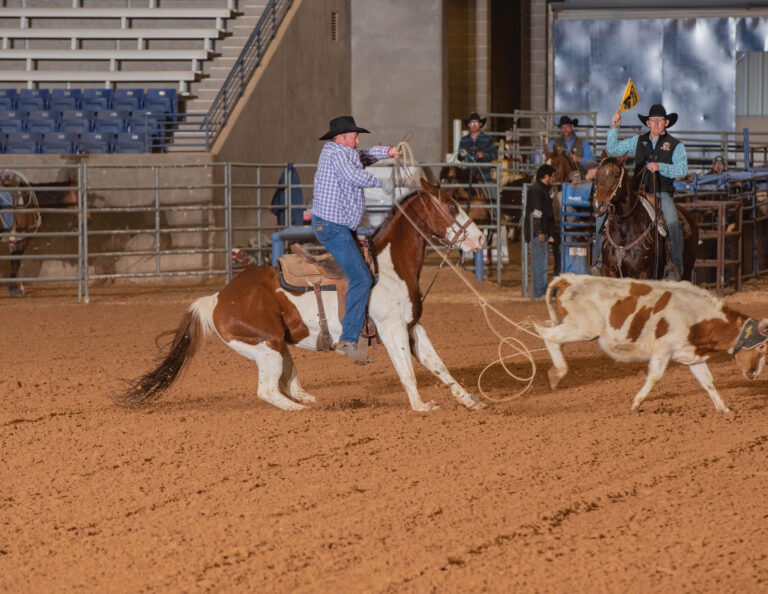Q: Please rattle off all of your NFR partners.
A: It all started with Leo (Camarillo) in 1985 as far as my professional career goes. I roped with Denny Watkins at my first NFR in 1986. The first check we got for placing in a round (splitting second in Round 3) was for $3,000, and we thought that was a lot of money. Now they get $10,000 just for showing up. I also roped at the Finals with Dennis Gatz, Monty Joe Petska, Cody Cowden, Tyler Magnus and Allen Bach, then roped at my last NFR with Mike Beers in 2001.
Q: How did you know it was time to hang it up on full-time rodeo?
A: I was roping with Mike, and we were all at Pendleton when 9/11 happened in 2001. The airports got crazy, and stayed crazy. The thing that bothered me the most was trying to get traded at rodeos, and guys wanting their fees paid to trade. Mike and I were having a good winter in 2002. But I was over those all-night drives on I-10, like the night I was at the wheel driving from Tucson back to the short round at Houston, and Mike woke up and asked if I was okay. I told him, “Hey, man, you need to find a new partner.” I was worn out. We won a bunch for second at Houston and were in the top five in the world, but my mind was made up. I sold my horse (Dunny) before we left Houston. All that traveling was just part of the job I wasn’t willing to do anymore.
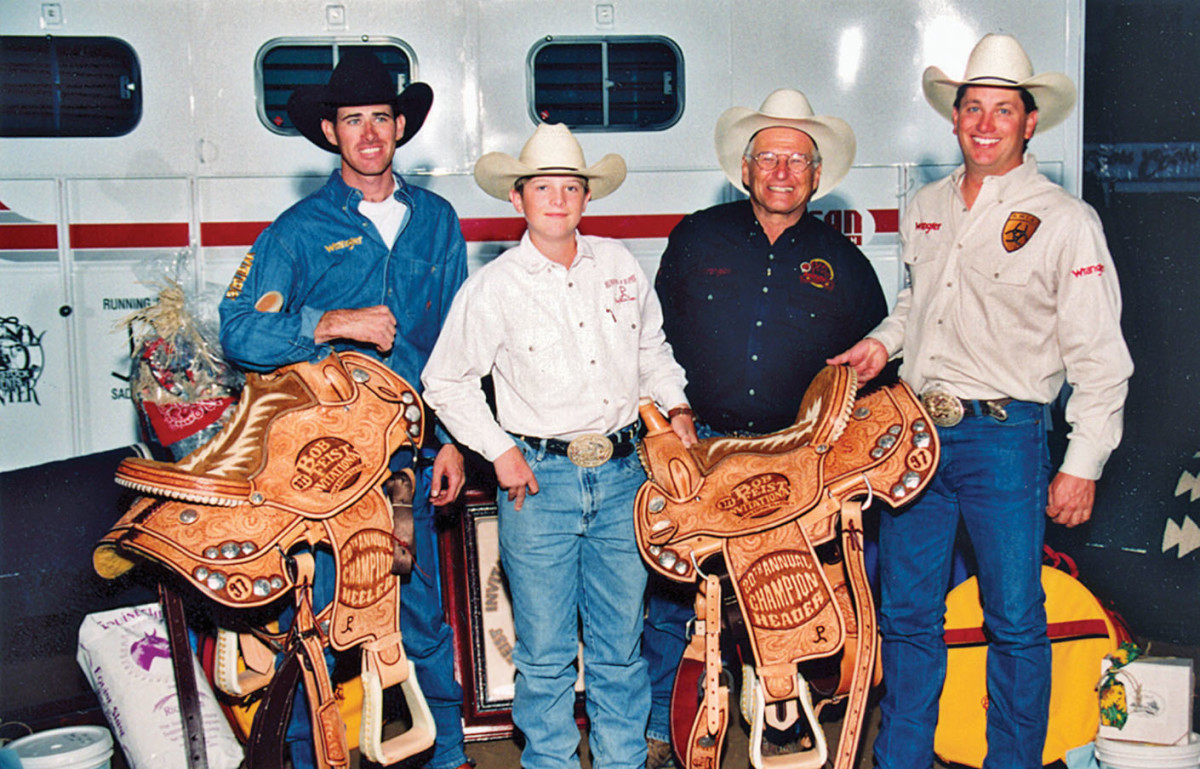
BFI photo by Larry Fulgham
Q: What did you love most about those rodeo years?
A: I enjoyed the guys and the competition. When you rodeo hard, you make some great friends. But the travel, the trading and the airports turned into a total disaster. After 9/11, there were five-hour waits at airports, it was hard to get flights and you couldn’t even carry your pocket knife anymore. It turned into a big hassle.
Q: What was your original roping goal?
A: I was so young I don’t know that I had a goal at the start. I’d amateur rodeoed back here my whole life, but was back and forth to work on the ranch. Leo showed me that roping is a business. That was a pretty big eye opener.
Q: Talk about some of your most memorable partnerships.
A: At one time, I held the (4.3-second NFR) record at the Thomas & Mack with Dennis and Mike at the same time, so that was pretty cool. The most memorable would have to be Allen, because I was roping with him both times I won the world. Winning those five rounds in a row (Rounds 6-10 at NFR ’93) is a standard guys still shoot for today.
Q: What sets your two world titles apart?
A: When you’re practicing when you’re young, there are two scenarios that always come into play. “We’re Reg (Camarillo) and Leo, and all we have to do is be 4.5 on this last steer to win the world,” or “All we have to do is catch to win the world.” Those are the two scenarios it came down to for me. In 1993, we had to win the 10th Round, and in 1995, all we had to do was catch our last one to win it.
Q: Talk about being the lone team roping world champ in 1993.
A: Allen had $6,000 less won than I did, because we didn’t start roping until August. I roped with Clay (Cooper) until about Dodge City that year, then started heading for Allen. Allen was that year’s reserve champ, but if it’d happened a couple years later he’d have a fifth gold buckle.
Q: A lot of young guns might not remember that 1995 was the first year a separate world champion header and heeler was named.
A: Yeah, we didn’t know any different before that. But it never made sense to not name two world champions in the team roping, just like it still doesn’t make sense that there’s not equal money everywhere. We fought for that the whole time I was rodeoing. It takes two to team rope, and we both pay our own way—PRCA dues, entry fees, fuel, Procom, all of it.
What It Takes to Make It in Team Roping with Clay O’Brien Cooper
Q: Talk about your two AQHA Horses of the Year—your yellow horse Bar Smug won it in 1990, and your signature sorrel Spiff, who was recognized by a vote of your peers in 1994—and what made them so special.
A: I grew up on those two horses, so they fit me better than anything else I ever rode. We roped bigger, fresher steers back then, so the handle on a horse was so important. You couldn’t just let them drop, so you had to have big, stout horses with a lot more control with your left hand than you need now on smaller steers that have been roped a lot.
Q: Your daughter Brittany is married to two-time NFR heeler Tyler Worley. How is it being an NFR father-in-law?
A: Tyler’s kind of put me back into the know. I pay attention to it again now. It’s always fun watching family.
Q: What’s your life like now, and how much do you get to rope?
A: We raise horses, cattle and hay here in Arkansas, so it’s a full-time job. I still rope cows and calves in the pasture, but I haven’t run one in the arena in years. I miss it, but I’d have to get my right shoulder fixed to do it. And I can’t feed cows left-handed for six months to get that done.
Q: Are you content with your roping career, which also included winning both the BFI and George Strait with Cody Cowden in 1997?
A: After I won the world a second time, I was content. Looking back, I will agree with Jake Barnes that rodeoing for a living is a young man’s game. Once you have a family, you just want to get home to your wife and kids, instead of staying on the road with four head horses. When your priorities change, it’s hard to stay at the top of your game. Roping is everything until you have kids. I tell young people who ask my advice, “Don’t have kids until you’re ready to step off of the gas.”




